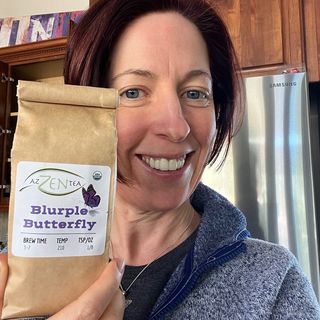
If you’re “eating clean” but still find yourself having unexplained reactions such as bloating, hives, skin issues, IBS, and other challenges, here are five reasons that may be hindering you.
1. CITRIC ACID
If you are allergic to yeast, corn, mold, or are sensitive to sugars then the food additive “citric acid” could be a problem for you. For food allergy purposes, the food additive citric acid is considered to be in the “Fungus” food family along with mushrooms, Baker’s yeast, brewer’s yeast, nutritional yeast, and molds in certain cheeses. This means that you could be reacting to the food additive citric acid, which is not the same as the citric acid found in citrus juice.
The food additive citric acid is manufactured by an industrial culture of a type of mold called Aspergillus Niger. In the manufacturing process, the mold culture is fed sugar solutions, which are often derived from corn. Many people who react to foods containing citric acid may actually be allergic to the mold, sugar, or corn used to produce the acid.
2. XANTHAN GUM
Derived from either corn, wheat, dairy, or soy, xanthan gum can be found in makeup, baby formula, baked goods, salad dressings, ice cream, and soups. It is made by adding bacteria to fermented corn sugar and processed with ethanol or isopropyl alcohol (petroleum.) Though the FDA deems this to be “generally safe,” xanthan gum swells in the digestive tracts and creates a bulk forming laxative which can lead to blockage, stomach pains, and other digestive discomfort. Also, if you have allergies from the derivative, then you could have a reaction to the ingredient when eaten or used topically.
3. NATURAL FLAVORS
According to the Code of Federal Regulations: “The term natural flavor or natural flavoring means the essential oil, oleoresin, essence or extractive, protein hydrolysate, distillate, or any product of roasting, heating or enzymolysis, which contains the flavoring constituents derived from a spice, fruit or fruit juice, vegetable or vegetable juice, edible yeast, herb, bark, bud, root, leaf or similar plant material, meat, seafood, poultry, eggs, dairy products, or fermentation products thereof, whose significant function in food is flavoring rather than nutritional.”
So this means that your food can contain (and I am not making this up) corn, MSG, mold, fungus, wax, petroleum, bug shells, bark, secretions from scaly female bugs about to lay eggs, GMO-fed animal parts, pig stomach lining, animal bones, animal oils, and anal glands from beavers (seriously not kidding as this is a POPULAR food additive). If you’re a vegan, (and even if you’re not) this probably isn’t making you too happy.
4. GMO FOODS
If you are finding you have allergies to foods now, that you didn’t have before or that your allergic reactions are getting worse, genetically modified foods may be the culprit.
Beginning in 1996, bacteria, virus and other genes have been artificially inserted to the DNA of soy, corn, cottonseed, and canola plants. These unlabeled genetically modified foods carry a risk of triggering allergic reactions, and evidence collected over the past decade show that they are contributing to higher allergy rates.
Genetically modifying soy and corn (the two most genetically modified foods) has been found to raise natural allergens by 27% and the amino sequence are identical to known allergens. One study verified that genetically modified soybeans contain an IgE-binding allergenic protein not found in non-GM soy, causing people to have reactions to the GMO soy, but not the non-GM soy.
5. PESTICIDES:
People with the highest levels of dichlorophenols were 80 percent more likely to have food allergies compared to people with the lowest levels, the researchers reported today in the journal Annals of Allergy, Asthma and Immunology.
Dichlorophenols have been found to kill bacteria, says lead author Elina Jerschow, MD, MSc, assistant professor in clinical research at Albert Einstein College of Medicine in New York, “and it’s been found that anything that decreases the bacterial load in our environment is associated with more allergies.”
These pesticides are not only on your food, they’re IN your food where you couldn’t even wash them off. The Monstanto company has figured out a way to get the pesticide into the corn so that when the kernels grow and open, the pesticide is actually already in them so the bugs won’t eat them. Even more alarming (as if that wasn’t enough) the Roundup Ready (a.k.a. pesticide) protein added directly into to foods such as corn has been found to continue to produce in the gut constantly exposing it to potentially allergenic proteins.
HOW TO PROTECT YOURSELF
Frightening, right? But now you’re more aware of what’s going on with your food and where it’s sourced.
- Buy organic, non-genetically modified foods.
- Read every food label, every time. If the words “natural flavors” are on the label then either put the item back, or call the company and find out exactly what ingredients are being used. By law the company has to tell you.
- If the product has corn in it (or an item derived from corn) don’t buy/eat it.
- Avoid products that contain xanthan gum or the food additive citric acid (citrus juice is ok).
- Avoid prepackaged products. Most of them contain preservatives and all the things you don’t want.
Additional Resources
http://www.care2.com/greenliving/reasons-vegans-read-labels-natural-flavorscastoreum.html?page=2
http://foodallergies.about.com/od/Other-Food-Allergies/a/Citric-Acid-Allergy.htm
http://www.foxnews.com/health/2012/12/04/are-pesticides-and-food-allergies-linked/
http://www.ncbi.nlm.nih.gov/pubmed/23176881
http://www.rodale.com/food-allergy-causes
(http://www.globalresearch.ca/genetically-modified-foods-unsafe-evidence-that-links-gm-foods-to-allergic-responses-mounts/7277)
Read more: http://www.care2.com/greenliving/reasons-vegans-read-labels-natural-flavorscastoreum.html#ixzz2ecazJZnP
http://www.naturalnews.com/036308_natural_flavors_MSG_aspartame.html
http://foodidentitytheft.com/%E2%80%9Cnatural%E2%80%9D-can-run-the-gamut-from-bugs-to-beaver-butts/










